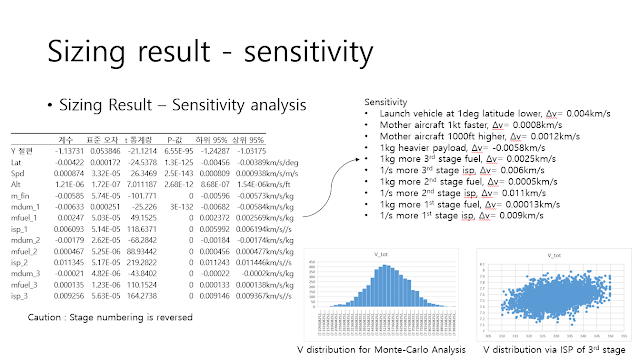[See Previous Contents]
This is a new proposed concept that minimizing launch cost, expendable part
1. Air-Launch for free launch angle, adding kinematic energy,
2. Recovery 1st Stage Part - which lands sea-surface smoothly - validated later
3. 2nd/3rd Stage 1-time-use
Concept Art, 1st stage art is borrowed from Russian Baikal Booster, however this booster is not engine propelled, using expanded glide wing only.
Becuase mother aircraft is limited to small-transport, MTOW is less than 25t with 300kg payload. Target altitude is 600km with 7.9km/s. Weight of empty structure is assumed as 20% of propellant mass.
Initial sizing is 600km with 7.5km/s with specific mass distribution. Engine ISP is assumed as typical liquid propelled engine.
Sensitivity result for mass distribution change.
In order to keep same total velocity, rocket need additional 5.7t for 1st stage.
30t rocket from air could reach powerful LEO condition.
30.4t rocket could increase payload from 300 to 405kg.
Air-Launch condition added 0.12km/s for Rocket at 24deg Latitude.
If 1st stage is changed to solid motor, because of low ISP, rocket should be increased to 28.7t
Gliding Analysis for Wing-Extended configuration; OpenVSP is used
L/D is not optimized yet but tested
Although, L/D is not fully optimized it land <300ft/min at M0.3 Speed.
SUMMARY
Concept study for Flyback-Booster
20t class rocket with 300kg payload is feasible; land-launch requires additional weight.
- 0.12km/s is added by aircraft condition.
Landing condition is reviewed and it shows glide-wing made <300ft/min landing at M0.3.














댓글 없음:
댓글 쓰기